Australia So Much to See


Caves of the Augusta Margaret River area - Moondyne Cave and the Boranup Forest
Moondyne Cave, (above) located at Jewel Cave, has a porthole entrance and is 26 metres high and 270 metres long. Signatures
on the walls date back to the late 19th century, and some of the formations began over 600,000 years ago.
Moondyne Cave was discovered in 1881 by Joseph Bolitho Johns, who had formerly been the bushranger known as Moondyne Joe. It was first opened for public viewing in 1911. Guided tours ended in 1959, but it was reopened after undergoing restoration for a small groups in 1992.
Small
groups of 10 at maximum are led by torchlight through the crystal chambers of Moondyne Cave. The intimate three hour tour gives you
an in-depth history of this marvellous underground time capsule. Moondyne Cave displays an impressive selection of ancient formations including pendulites, a kind of stalactite where the tip is submerged in a cave pool and becomes covered with calcite crystals.
The cave is also home to ‘The Tower of Babel, this is the largest stalagmite known in South West Western Australia.
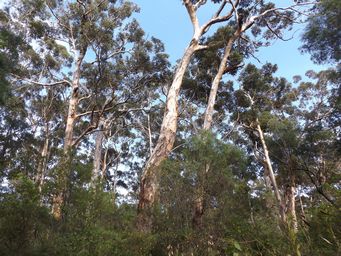
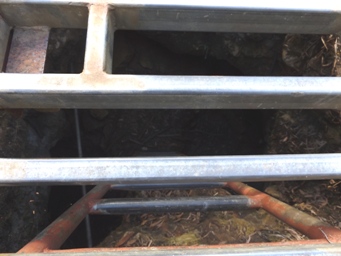
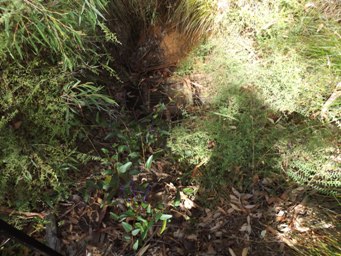
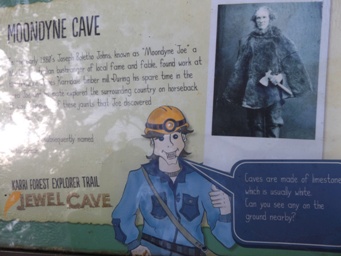
Although not open to the public, this small cave in the Leeuwin Naturaliste karst is of great anthropological significance. Devil's Lair is a single chamber cave with a floor area of around 200 square metres, five kilometres from the present coastline. Devil's
Lair - Wikipedia
Several
different techniques of dating have been used at Devil's Lair to show that human occupation began at around 48,000 years BP (Turney,
et al. 2001). BP (Before Present) years is a time scale used mainly in geology. This makes Devil’s Lair amongst the
earliest sites in Australia. Devil's Lair shows that people reached the extreme southwest of the continent very soon after their
first arrival.
Excavations at Devil's Lair have yielded early human ornaments in the form of three ground bone beads dating to
19,000–12,700 years BP. These beads were made from the limb bones of macropods and were manufactured by cutting the bone shafts
into short segments and grinding them smooth on abrasive stone. A deliberately perforated but otherwise unmodified stone object with
wear patterns suggestive of its use as a pendant dated to 14,000 year BP has also been recovered from Devil's Lair. These
artefacts are some of the earliest evidence of symbolic behaviour in Australia and are internationally significant for understanding
the timing and character of the emergence of
symbolic capacities in humans.
The Department of Parks and Wildlife wants to include Devil's Lair cave in the national park jurisdiction. The site is currently vested by the WA Museum.
Sources Science WA
and Wikipedia
Boranup (pronounced BoRANup) is an Aboriginal word that means "place of the male dingo" and the forest lies in the land of the Wardandi
(people of the Warden, the ocean spirit).
Caves Road (above left) winds through the Boranup Karri Forrest. There is a parking
bay with a short path to a forest viewing platform at Karri Lookout, approximately one kilometre south of Giants Cave. About
600 metres further south east along Caves Road, we turned onto the unsealed Boranup Forest Drive.
The majestic Karri trees of the Boranup Forest are about 100 kilometres east of the main karri belt and are separated by grey sand. One unique aspect of the forest is that these karri trees grow in limestone based soils where as in the main karri belt the trees grow in deep rich red clay soil.
Karri trees are very specific to the soil and depth of soil they can survive in,
with isolated pockets found in the southern corner of the state outside of the main Karri forest belt. This stretches from Nannup
and Manjimup in the north west, down to Walpole and Denmark in the south east, incorporating Pemberton, and Northcliffe. Karri trees
can grow up to eighty metres in height and are the third tallest tree in the world.
The Boranup Forest is a re-growth forest, and is over one hundred years old. Maurice Coleman Davies was first granted land in the Boranup Forest in 1882 to establish timber mills. Given a 42 year lease, M.C. Davies established the Karridale Mill in 1884, becoming the most advanced saw mill in the colony. Two thirds of the land in the forest consists of jarrah and marri trees with the remainder being karri. See more about the achievements of M.C. Davies.
Boranup Drive is an unsealed road which winds through the Boranup Karri Forest before looping back to meet Caves Road. On the Western edge of the forest, a lookout gives views to the coast including to Hamelin Bay.
We will visit Hamelin Bay on the next page, a holiday destination and a mostly calm bay for boating, where my family used to come on fishing trips in my youth.
National Parks campgrounds (fees apply) include:
Point Road; a small campground on the edge of the Boranup Forest is accessible
only by 4WD vehicle and can accommodate seven tents and small 4WD campervans. It is twenty kilometres from Margaret River
and located close to the Cape to Cape walk trail.
Nearby Conto campground has areas suited to most types of campers but
due to the popularity booking is required.
Further south along Boranup Forest Drive, Boranup is small campground which can accommodate just seven tents and small campervans only. Twenty one kilometres north of Augusta and not far from Caves Road, this is in the vicinity of the Cape to Cape walk trail.
Jarrahdene campground opened January 2018, with access for caravans, pit
toilets and barbecue area, reached via Jarrahdene Road heading east from Caves Road, booking required.
For hikers there are
several free campsites along the Cape to Cape walk trail.
Four kilometres south from Lake Cave along Caves Road, turn east to Café Boranup and Boranup Gallery. A kilometre through
the forest, on the edge of the National Park, there is a wonderful café and a gallery of high quality wood crafts and art. Scattered
amongst the trees are a number of accommodation options with cottage, chalet and lodge accommodation available.
Featuring
delicious home cooking and where possible local produce, fine food can be enjoyed in Café Boranup where beautiful little Blue Wrens
flit in and out. The natural polished wood décor fits perfectly into this forest environment. Be it breakfast, morning or afternoon
tea, or lunch, you will enjoy a feast in a very friendly environment.
The Boranup Galley features a number of selected artists and craftsmen from a variety of media, including magnificent natural
timber furniture, creations from wood, glass or metal, paintings and jewellery. Photography is not permitted inside the gallery,
but some of the art and crafts on display can be seen displayed on their website.

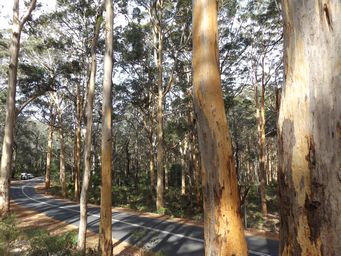
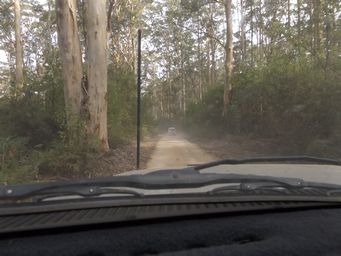
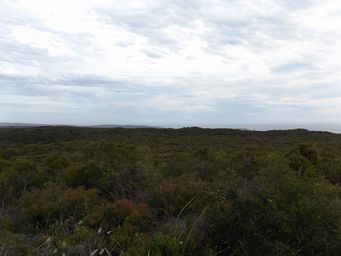
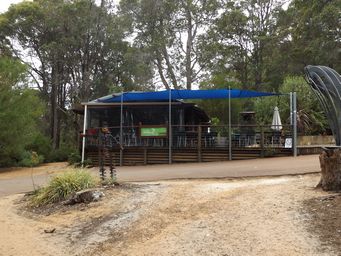
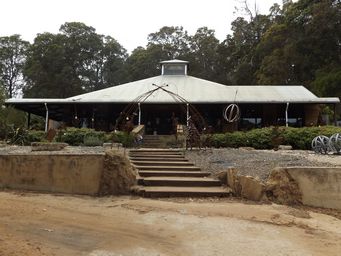
Contenders for earliest site of human occupancy in Australia
Devil’s Lair: Limestone cave south-west Western Australia
– 41,000 to 46,000 years old
Lake Mungo: Dry lake basin, Willandra Billabong Creek, western NSW 43,000
Nauwalabila: Rock
shelter Arnhem Land 200 kilometres east of Darwin – 40,000
Malakunanja: Rock shelter 45 kilometres north of Nauwalabila, east of Darwin – 45,000
Source Journal of Archaeological Science
See more recent discoveries of even earlier occupancy on Ancient Aboriginal Culture and connection with Australia